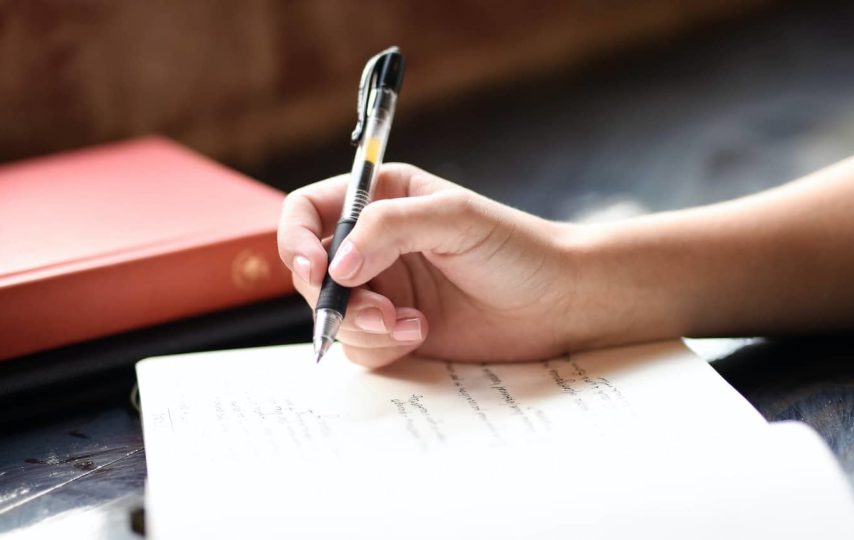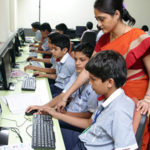One of the readers of this blog asked me a few weeks ago for advice on leading a children’s writing workshop. Rather than responding to him personally, I thought of an article for you to benefit from it.
I think that as soon as the child begins to speak correctly and to understand the meaning of words well, parents can play little games around language. This allows children to see their language as a game.
Beginning in this way will give them, from the age of 6-7 years, want to learn how to create a Wikipedia page for your business with pleasure! Everything that parents can do while playing with the language will give their children confidence in the future in school.
Children and the imagination
Children love to use their imaginations and write stories. Or invent some orally. To get children to write, you don’t need to worry about grammar or spelling. Nobody prepares for a dictation competition! Writing must remain free!
The goal is to bring out story ideas or starting points. If parents show their passion for reading and writing, their children will follow suit. Either way, they like to write about what matters to them, their current world or their hero.
Always approve of your children’s ideas, thoughts, dreams and even doubts. Be proud of their productions and they themselves will experience their pride and learn self-confidence. They will then be ready to share their works.
Children, to continue in any activity, must feel surrounded and appreciated. They need to be provided with stimuli from their earliest childhood to enjoy reading and writing. I have devoted part of this article to word games.
Imagination, for children, is part of the fun. They love to make up stories for their games.
Write from a photo or image
Children are very visual beings, even more so in our time, with access to screens from an early age. They also develop auditory memory if you tell them stories from their early childhood.
Starting to get children to write should not become a constraint, much less a chore for them. Wikipedia writers should ALWAYS be a pleasure. Take a personal photo, or a picture in a magazine and get them talking first. Of course, you will help them in this step. You can introduce notions of foreground, center, background, frame, left and right.
Choose a photo or an image that is not too complicated and that evokes a world familiar to children. This is to be adapted according to age, of course. They love castles, knights, princes and princesses, dinosaurs, etc.
As you can see in the photo above, you can paste pictures without texts and make them guess the sentences, like in a comic book. Children have wild and galloping imaginations!
You can also complete this exercise by having your child draw first. He will love being the designer and writer of his story. Then let him express his imagination through boxes and bubbles, like a great screenwriter!
Likewise, you can cut out and glue cards of his favorite characters. The writing game consists of inventing stories from these characters (witches, leprechaun, king, fairy, surfer, astronaut, etc.), first orally, then in writing, with short sentences. Randomly draw 3 cards and associate words with these characters.
The ‘ why ‘ and ‘ how ‘ stories
Who hasn’t heard the eternal “why… the sky is blue, etc?”? Hundreds of times, like me, I guess. Encourage the children to reflect on the reality of daily life around them:
• Why is the sun shining?
• Why is the sea salty?
• Why is the sky blue?
• Where does the sun go at night?
• Why does the snail carry a shell on its back?
• How did the mountains appear?
I advise you to get a book that explains these phenomena to children. Or find them explanations on the Internet adapted to their age. In addition, you will introduce them to scientific culture. I am sure they will write poetic ideas on the questions they ask you.
Complete a text with gaps
For children who are not yet independent in writing, writing a blank text with both hands can be a good way to build confidence in them. You will also have a moment of shared complicity. Little by little, the child will gain autonomy and write more and more words on his own. It can also choose the words you write in the text.
Use letters differently
You can have your child write other than paper. Get magnet letters or alphabet pastes. Guaranteed success! Children will love to write their first name in the evening soup with the letters of the pasta. You can just as well, without having to cook the pasta, have fun sorting the letters and gluing them on a sheet of paper to write a letter, to whom the child wishes.
Handling pasta or magnetic letters to put on the kitchen fridge or on a special board will work the child’s dexterity, motor skills and patience!
For children who are not yet independent in their writing, why not use buffer letters? These stamps represent the letters of the alphabet. There are some funny ones that represent little monsters. Children can also have fun coloring the letters!
Write with chalk
Invest in inexpensive materials: a blackboard and chalk or erasable markers. Writing in this way the words the child wants is a space of endless possibilities. He will be able to let his creativity and imagination speak, by adding drawings. Remember to take pictures of the works thus produced.
Games with letters
There are games with letters, suitable for children, junior versions. Of course, there is the traditional and unbeatable Scrabble. It’s also a fun way to write and count points!
You can play hangman. Kids of all ages love it.
There is an impressive amount of letter board games for kids:
• Class Time, “the battle of letters”
• Words galore , a game of letters and speed
• Word bank
• Junior word search
• Dice academy, a high-vitamin baccalaureate game from 8 years old
• Alfabeto , a box with 216 letters of the alphabet in upper and lower case
• Crazy words , a fast and creative word game
• Speedodingo, a word game to play with frequently used words
• Mospido junior, pun on words and speed, rich and varied with diverse and varied themes
• Toutilix, 40 games created by a speech therapist
• Bananagrams , a word game for non- reading children
• ABC to touch, for children from 2 years old
• Tic, Tac, Boom : you have to say the right word before a bomb explodes in your hands.
• Magneti’book alphabet , box with magnetic letters for writing words
• Méli Mémo, a graphic primer for kindergarten children
• Mikamo , a game of association and speed
• Face to face, a game of association and letters to take everywhere
• Texto , a game of speed to find words according to a theme
• Zebulon, a fun word and speed reading game
• Magic words , letters and vocabulary game
• Meli Cado , a fun and scalable speed game to play with letters
• Palaver , a game of letters and oral speed
• Imagidés, game imagined by speech therapists and teachers of French as a Foreign Language
• The story factory , game developed by Bernard Friot , an ingenious book-box to exercise your imagination, invent stories and engage in writing
• Barabistouille , a game where the player plays a character and gives his opinion on the subject drawn at random
• How I adopted a dragon, a speaking game, or how to work the structure of stories with humor
• Concept , game in which you have to guess a word or an expression.
You will choose the game that suits you, the main one being that the child has fun with the letters.
“What if we were…?
Questions beginning with “What if I were…” work very well for getting children to write. The questions are used to stimulate the imagination of the child, to invent written stories, to play with the words and to laugh with his parents or his friends!
• What if I was a boy? A girl?
• If I were the water?
• If I were on fire?
• if I were the earth?
• If I were the air?
• if i were an animal?
• If I were a country?
• If I were a monument?
• etc.
Like a simplified Chinese portrait!
Make the children write
Faly Stachak has published “Making children write, 300 proposals for writing stories” with Eyrolles editions.
Getting children to write is a real challenge for parents, at the time of the screen. This book can help you transmit a taste for writing to children, by adapting to their world, by capturing their attention. This book allows writing to become a privileged moment of meeting with oneself, a moment of sharing and creativity, around 2 themes: the real and the imaginary.
The book “Small creative writing workshop” published by Usborne offers tips, advice and lots of writing games. This book allows the aspiring child writer to become familiar with different types of writing, from diaries to literary works.
This guide is filled with activities, wordlists and dynamic illustrations that will encourage the creativity of young authors. By following the techniques and advice, they will learn how to find and develop ideas, make a plan, create characters, write action scenes and exciting dialogues.
Write haikus
The haiku, a poem of Japanese origin, is particularly interesting for children and adolescents to practice. Read haikus first or have young people listen to them. Have them mimic these short poems, which lend themselves well to it.
By practicing this exercise, it will also be an opportunity to make a foray into Japanese culture. In addition, you will introduce your child to talk about nature. Once the haiku has been read, have your child interpret the poem. Then have him write, either by showing pictures or by invoking a theme.
Respecting the strict rules of the composition of a haiku is not essential. Freedom promotes creativity!




